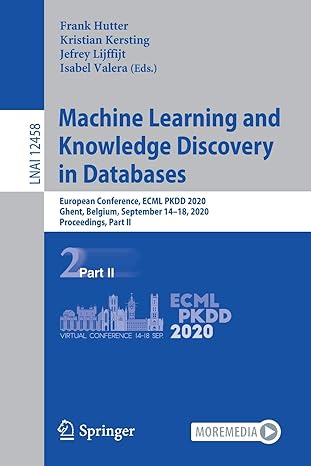Question
Write a member method Enqueue which utilizes a doubly-linked list of characters. The method takes a character input and will not return anything. The list
Write a member method Enqueue which utilizes a doubly-linked list of characters. The method takes a character input and will not return anything. The list is based on the following node definition:
class node {
char data;
node next;
node prev;
}
For 7 and 8 use the following definition:
class node {
boolean data;
node link;
}
-----------------------------------------------------------------------
Consider a structure using a linked list in which you added and removed from the back of the list. Using the node definition above, write the pseudocode for a member method add to this structure. Assume the existence of a front and back reference.
-----------------------------------------------------------------------
Assume you are working with a stack implementation of the linked list definition above (above question #7), write a member method pop. The method should return a value (in the popped node). Assume the existence of the node references called TheStack and Top. These references point to the start (or bottom) and top of the stack (or back of the list).
-----------------------------------------------------------------------
Looking at linked lists, and then comparing the implementations of the stack and queue using them, what comparisons can you make? Aside from name conventions differences, what other generalizations can you make? Hint: look at location (or order) for add/delete.
Step by Step Solution
There are 3 Steps involved in it
Step: 1

Get Instant Access to Expert-Tailored Solutions
See step-by-step solutions with expert insights and AI powered tools for academic success
Step: 2

Step: 3

Ace Your Homework with AI
Get the answers you need in no time with our AI-driven, step-by-step assistance
Get Started


